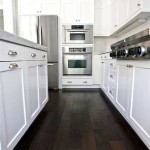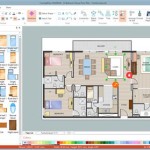How Much Does It Cost To Install A Hardwood Floor?
Installing hardwood flooring is a significant investment that can enhance the aesthetic appeal and value of a property. Understanding the costs associated with this project is essential for homeowners planning renovations or new construction. Several factors contribute to the overall expenses, making it crucial to conduct thorough research and obtain accurate estimates before proceeding.
The cost of installing hardwood flooring varies widely, generally ranging from $6 to $25 per square foot, including both materials and labor. This range encompasses different types of hardwood, installation methods, and the complexity of the project. Lower-end estimates typically relate to less expensive materials and straightforward installations, while higher-end estimates reflect premium wood types, intricate patterns, and challenging subfloor conditions.
To accurately budget for a hardwood flooring project, it is important to consider the various cost components. These include the cost of the hardwood material itself, the cost of labor for installation, any necessary subfloor preparation, removal and disposal of existing flooring, and additional expenses like trim, molding, and underlayment.
Understanding the Cost of Hardwood Materials
The type of hardwood selected significantly impacts the overall project cost. Hardwood flooring is broadly categorized into solid hardwood and engineered hardwood, each with its own advantages and pricing structures.
Solid hardwood is made from a single piece of wood, providing a classic and durable flooring option. Popular choices include oak, maple, cherry, and walnut. The cost of solid hardwood varies depending on the species, grade, and width of the planks. Oak, for example, is generally more affordable, ranging from $3 to $8 per square foot for the material alone. Premium species like walnut or exotic hardwoods can cost upwards of $10 to $15 per square foot.
Engineered hardwood, on the other hand, consists of a thin layer of hardwood veneer bonded to a core of plywood or high-density fiberboard. This construction makes engineered hardwood more dimensionally stable than solid hardwood, less susceptible to moisture and temperature fluctuations, and suitable for installation in basements and other areas where solid hardwood might not be ideal. While engineered hardwood can mimic the appearance of solid hardwood, it generally costs less, ranging from $2.50 to $10 per square foot for the material.
The grade of hardwood also influences its price. Higher grades, such as "clear" or "select," have fewer knots and imperfections, resulting in a more uniform appearance and a higher price point. Lower grades, like "common" or "rustic," contain more knots and color variations, offering a more natural look at a lower cost. The choice of grade depends on the desired aesthetic and budget considerations.
Beyond the species and grade, the width of the planks affects the price. Wider planks generally cost more than narrower planks due to the increased material required and the potential for greater waste during manufacturing. Plank width also affects the installation cost, as wider planks require fewer pieces to cover the same area.
Calculating Labor Costs for Installation
Labor costs represent a considerable portion of the total hardwood flooring installation price. The cost of labor depends on the complexity of the project, the size of the area to be covered, and the prevailing labor rates in the region. Installation methods also play a role, with more intricate patterns and techniques demanding more time and expertise, leading to higher labor expenses.
Professional hardwood flooring installers typically charge between $3 to $10 per square foot for labor. This rate covers the preparation of the subfloor, the installation of the hardwood flooring, and the finishing touches, such as installing baseboards and trim. The actual labor cost per square foot can vary based on several factors.
The condition of the subfloor is a significant determinant of labor costs. If the subfloor is uneven, damaged, or requires extensive repairs, additional labor will be needed to level and prepare the surface before installing the hardwood flooring. This may involve patching holes, sanding high spots, or even replacing sections of the subfloor. Such preparations can add both time and cost to the project.
The complexity of the installation pattern also affects labor costs. Simple installations, such as straight plank layouts, are generally less expensive than more intricate patterns, like herringbone or parquet. These complex patterns require precise measurements, cutting, and fitting, demanding more skill and time from the installer.
The presence of obstacles in the room, such as cabinets, stairs, or complex architectural features, can also increase labor costs. These obstacles require careful cutting and fitting of the hardwood flooring, adding to the time and effort required for installation.
It is always advisable to obtain multiple quotes from different flooring installers to compare prices and services. Checking online reviews and asking for references can help in selecting a reputable and qualified installer who can provide a fair and accurate estimate.
Accounting for Subfloor Preparation, Removal, and Additional Costs
Beyond the cost of hardwood materials and labor, several additional expenses contribute to the overall cost of a hardwood flooring project. These include subfloor preparation, removal and disposal of existing flooring, and the cost of underlayment, trim, and molding.
Subfloor preparation is crucial for ensuring the longevity and performance of the hardwood flooring. A properly prepared subfloor provides a stable and level surface for the hardwood to rest upon. Depending on the condition of the existing subfloor, preparation may involve cleaning, leveling, patching, or even replacing sections of the subfloor. The cost of subfloor preparation can range from $1 to $5 per square foot, depending on the extent of the work required.
The removal and disposal of existing flooring can also add to the overall cost. If the existing flooring is carpet, tile, or vinyl, it will need to be removed before installing the hardwood. Removal and disposal costs can range from $1 to $3 per square foot, depending on the type of flooring and the difficulty of removal. Some homeowners opt to remove the existing flooring themselves to save on costs, but this can be a time-consuming and labor-intensive task.
Underlayment is a thin layer of material installed between the subfloor and the hardwood flooring. It provides cushioning, sound insulation, and moisture protection. The cost of underlayment ranges from $0.50 to $2 per square foot, depending on the type and quality of the material. Some engineered hardwood floors come with pre-attached underlayment, which can save on material and installation costs.
Trim and molding are used to cover the edges of the hardwood flooring and provide a finished look. Baseboards, quarter-round molding, and shoe molding are common types of trim used in hardwood flooring installations. The cost of trim and molding varies depending on the material and style, but generally ranges from $1 to $5 per linear foot. The amount of trim and molding required will depend on the size and shape of the room.
Other potential costs to consider include the cost of moving furniture, renting equipment, and obtaining necessary permits. Moving furniture can be time-consuming and physically demanding, so some homeowners opt to hire professional movers. Renting equipment, such as saws and nail guns, may be necessary if the homeowner is planning to install the hardwood flooring themselves. Depending on local regulations, permits may be required for flooring installations, especially in older homes or buildings.
By carefully considering all of these cost factors, homeowners can develop a realistic budget for their hardwood flooring project and avoid unexpected expenses. Obtaining multiple quotes from different contractors and suppliers, conducting thorough research, and carefully planning the project can help ensure a successful and cost-effective hardwood flooring installation.
The decision to install hardwood flooring is a significant one, both aesthetically and financially. Understanding the nuances of material costs, labor expenses, and hidden fees enables homeowners to approach the project with confidence and make informed choices that align with their budgets and design preferences. A well-planned and executed hardwood floor installation can significantly enhance the value and livability of a home for years to come.

Average Hardwood Flooring Prices In 2024 Forbes Home

How Much Does Hardwood Flooring Cost 2024 Guide

How Much Does It Cost To Install Hardwood Floors Homeserve Usa

Cost To Install Hardwood Floors The Home

How Much Does It Cost To Install Hardwood Flooring Inc

Cost To Install Hardwood Floors The Home

Hardwood Flooring Installation Costs 2024

Hardwood Flooring Installation Cost 2024 Data Angi

Flooring Installation Cost 2024 Guide Modernize

How Much Does It Cost To Install Engineered Hardwood Floors







